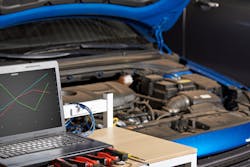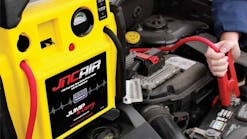What you will learn:
• Investing in tools isn't as expensive, when the tool features are utilized
• Learn what tools can and cannot do, for comparative measure
• 'Inexpensive' might not be the best characteristic to focus on
When it comes to ROI, many techs won’t bat an eyelash about purchasing tools for mechanical repair. However, the gripe has always been that diagnostic equipment is simply too expensive to purchase. I suppose that is a relative argument.
A necessary tool is one we couldn’t function without. Not many diagnostic tools are looked at as a necessity. I guess that all depends on the type of work you or the shop specializes in. Diagnostic equipment is indeed pricey. However, they typically are a justifiable investment. Especially when the tool’s features are capitalized upon.
'Free' is not for me
I’ll lead this conversation with an example: Just look at a typically digital volt/ohmmeter (DVOM) in today’s era. They function to allow the technician to measure voltage, resistance, and amperage. Of course, we would expect this basic functionality for even the least expensive DVOM available. Now consider the wide range of costs. I’ve seen DVOMs available for “Free” (with another purchase, from a certain store). I’ve also seen a popular, high-quality DVOM for over $400. Why such a large price difference? The better question may be, “Why would you want to pay $400 when you could get similar functionality for ‘Free’?”
Disregard the quality (and accuracy) factor and focus on some of the ‘bells and whistles.’ It gives validity for the reason of spending the $400 (instead of “FREE”). For instance, many of the higher quality DVOMs have some features that make them a bit more valuable to the diagnostic technician. The key to that factor is if the technician learns about these features and chooses to implement them.
Features found on some of the more expensive DVOMs include a “MIN/MAX” function. In plain English, it takes serves to capture momentary increases (or decreases) in measured voltage, even if what is visible on the display (during LIVE capture) doesn’t reflect it. This feature allows the DVOM to function more like its much faster cousin, the DSO (or digital storage oscilloscope).
Use the right tool for the situation
Another awesome feature allows the DVOM to display characteristics of what it is measuring. What I mean is, to capture a voltage signature that varies in amplitude and duty cycle is not something that can be deciphered by the technician, normally. This is simply because of how the DVOM samples/averages and displays the measured data. Implementing a feature designed to capture and display duty-cycle, the meter will display that character in the form of a percentage, which will be a stable reading on the DVOM display. Viewing data in this fashion (on a numerical display) now holds value when it was only possible on a graphical display (like a graphing multimeter or DSO).
Although I’ve only named a few valuable features on a valuable tool like a DVOM, it gives the tool much more value to a technician. The cost of that DVOM can certainly be justified and even more so if the tech learns of and implements even more available features.



